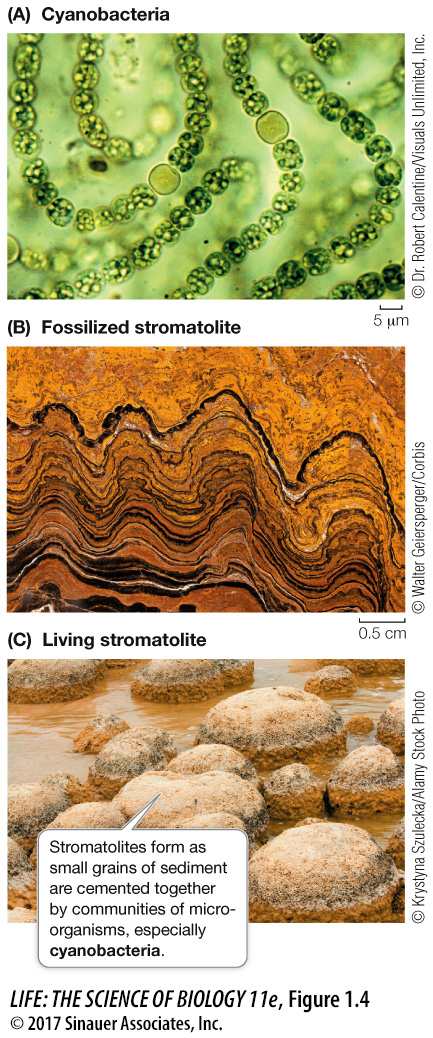Photosynthesis allows some organisms to capture energy from the sun
Living cells require energy to function. The earliest prokaryotes supplied their energy needs—
Photosynthesis transforms the energy of sunlight into a form of *chemical energy that can be used to do work such as the synthesis of large molecules. These large molecules can then be used to build cell structures or can be broken down to provide metabolic energy. Photosynthesis is the basis of much of life on Earth today because its energy-

*connect the concepts The pathways that harvest chemical energy to do all the kinds of biological work necessary to support metabolism are presented in Chapter 9.
During the early history of prokaryotic life, there was no O2 in Earth’s atmosphere. In fact, O2 was toxic to many of the prokaryotes living at that time, and its buildup in the atmosphere resulted in a huge mass extinction. But those organisms that could tolerate O2 proliferated. Atmospheric O2 opened up vast new avenues of evolution because aerobic metabolism—a biochemical process that uses O2 to extract energy from nutrient molecules—
Oxygen in the atmosphere also made it possible for life to move onto land. For most of life’s history, UV radiation falling on Earth’s surface was so intense that it destroyed any organism that was not shielded by water. The atmospheric accumulation of photosynthetically generated O2 over a period of more than 2 billion years gradually produced a thick layer of ozone (O3) in the upper atmosphere. By about 500 million years ago, the ozone layer was sufficiently dense and absorbed enough of the sun’s UV radiation to make it possible for organisms to leave the protection of the water and live on land.